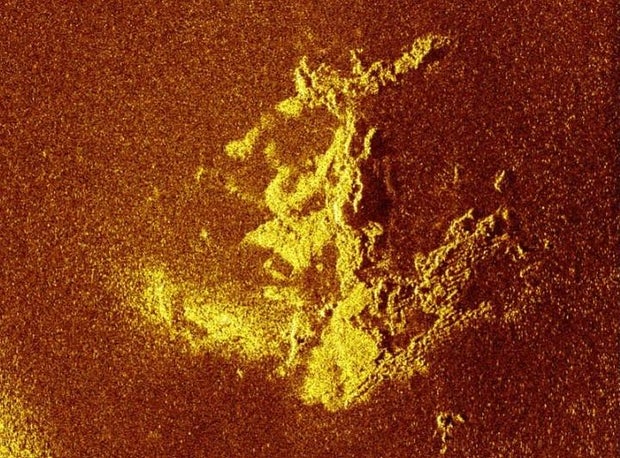A sonar image suspected of showing the remains of the plane of Amelia Earhart, the famed American aviator who disappeared over the Pacific in 1937, has turned out to be a rock formation.
Deep Sea Vision (DSV), a South Carolina-based firm, released the blurry image in January captured by an unmanned submersible of what it said may be Earhart’s plane on the seafloor.
Not so, the company said in an update on Instagram this month.
“After 11 months the waiting has finally ended and unfortunately our target was not Amelia’s Electra 10E (just a natural rock formation),” Deep Sea Vision said.
“As we speak DSV continues to search,” it said. “The plot thickens with still no evidence of her disappearance ever found.”
Deep Sea Vision
The image was taken by DSV during an extensive search in an area of the Pacific to the west of Earhart’s planned destination, remote Howland Island.
Tony Romeo, a pilot and former U.S. Air Force intelligence officer, told the Wall Street Journal earlier this year that he funded the $11 million search by selling off his commercial real estate properties.
“This is maybe the most exciting thing I’ll ever do in my life,” he told the Journal. “I feel like a 10-year-old going on a treasure hunt.”
Earhart went missing while on a pioneering round-the-world flight with navigator Fred Noonan.
Her disappearance is one of the most tantalizing mysteries in aviation lore, fascinating historians for decades and spawning books, movies and theories galore.
The prevailing belief is that Earhart, 39, and Noonan, 44, ran out of fuel and ditched their twin-engine Lockheed Electra in the Pacific near Howland Island while on one of the final legs of their epic journey.
Earhart, who won fame in 1932 as the first woman to fly solo across the Atlantic, took off on May 20, 1937 from Oakland, California, hoping to become the first woman to fly around the world.
Earhart and navigator Fred Noonan disappeared on July 2, 1937, while flying over the Pacific Ocean during Earhart’s attempt to become the first female aviator to circle the globe. They vanished without a trace, spurring the largest and most expensive search and rescue effort by the U.S. Navy and Coast Guard in American history. Earhart and Noonan were declared dead two years later.
Multiple deep-sea searches using high-tech equipment have tried but failed over the years to find Earhart’s plane.
There other theories about where Earhart may have vanished. Ric Gillespie, who has researched Earhart’s doomed flight for decades, told CBS News in 2018 that he had proof Earhart crash-landed on Gardner Island — about 350 nautical miles from Howland Island — and that she called for help for nearly a week before her plane was swept out to sea.
Gillespie’s organization, the International Group for Historic Aircraft Recovery, has also claimed that it found forensic evidence, including bones on the island, that were likely Earhart’s.
contributed to this report.


Leave a Reply